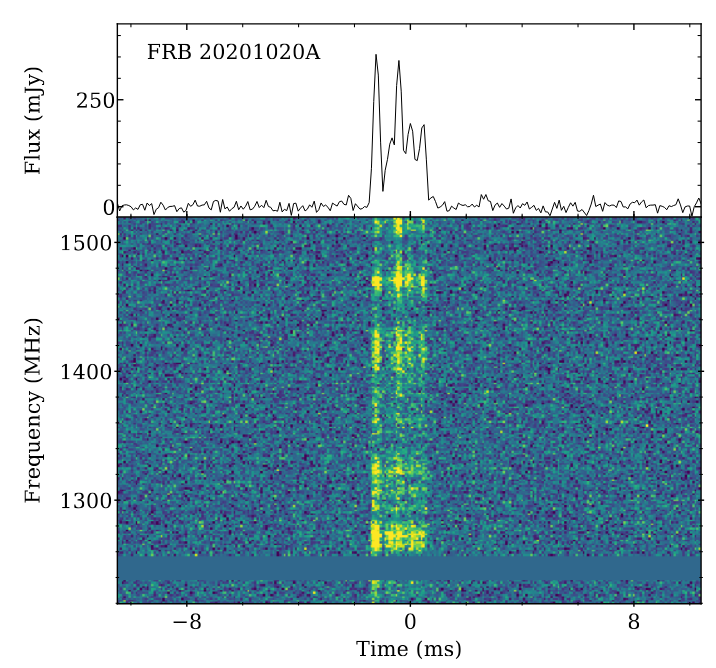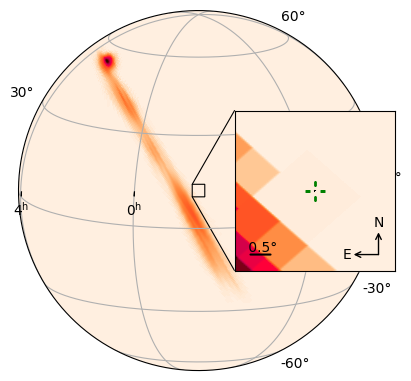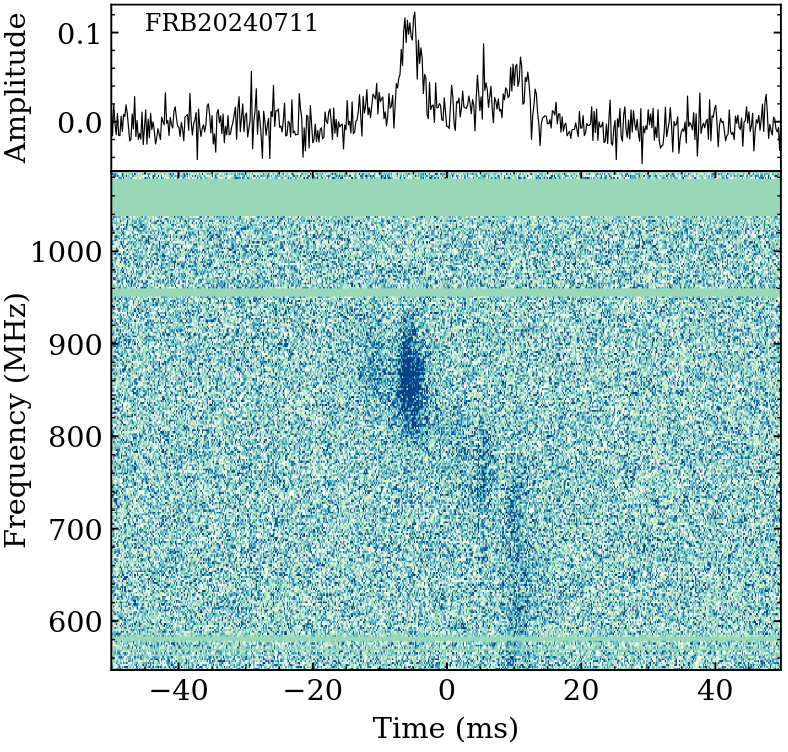
Figure 1 taken from Pastor-Marazuela et al., A&A 678, A149 (2023)
 Copyright © Michael Richmond.
This work is licensed under a Creative Commons License.
Copyright © Michael Richmond.
This work is licensed under a Creative Commons License.
You probably know something about gravitational waves: distortions in space-time itself caused by extremely violent events involving very massive, compact objects.
The LIGO collaboration has released a catalog of 182 events detected between 2015 and 2023 and has probably detected quite a few since 2023. The majority of these events are due to the mergers of two stellar-mass black holes in tight binary systems. Only a very few events, involving at least one neutron star, have been detected in some sort of electromagnetic radiation.
Q: Why don't two merging black holes emit a lot of
electromagnetic radiation?
Okay, let's put gravitational wave events on the shelf for a moment and turn our attention to a different type of astronomical transient: the Fast Radio Burst (FRB). First noticed in 2007, FRBs are very brief --- just milliseconds in duration! -- pulses of radio waves.

Figure 1 taken from
Pastor-Marazuela et al., A&A 678, A149 (2023)
In most cases, they appear just once and then never again, leaving us with almost no ideas about their sources. There are a few, however, which have been observed to repeat, allowing us to pin down their position in the sky to some degree.
Some evidence suggests that most FRBs occur in other galaxies, though several are thought to have gone kaboom in the Milky Way. Exactly what causes them is, as yet, unknown. It's not very easy to come up with a mechanism for producing such a short-lived, but high-power, burst of radio emission. Among the many possibilities for their origins are unusual supernovae, neutron stars, neutron stars with very strong magnetic fields (magnetars), and even black holes.
So, I was excited to see the news, just a few days ago, that an FRB might be associated with a gravitational wave detection!
If we could prove that the FRB was caused by the same physical event as the burst of gravitational waves (probably BH-NS or NS-NS, according to the telegram), we might have a strong clue to the origin of many other FRBs.
The problem is that, although the CHIME Telescope provides a relatively good position of the FRB -- inside the black box at the center of the map below -- the gravitational wave event's location on the sky, shown by the reddish colors, is rather ... less well constrained.

Figure taken from
Astronomer's Telegram 17021
Are these two events really related, or just a chance coincidence? I guess we'll have to keep watching the news to find out ....
Just a few days ago, I noticed that Astronomer's Telegram 17019: Discovery and followup of repeating FRB 20240711A contained an interesting phrase: sad trombone. What in the world can that mean? Why are astronomers describing some celestial source in this way?
This message describes the discovery of a source which produces very brief bursts of radio waves; and by "very brief", I mean VERY brief. Look at the figure below, taken from the telegram:

Figure 1 taken from
Astronomer's Telegram 17019
Q: How long does this burst last?
Astronomers have found a number of FRBs, but most of them have been seen just once, for a few milliseconds. That means that we can't go back with other telescopes to pin down their exact positions and figure out if they produce radiation at other wavelengths. It also means that we don't really know what sort of object is producing these bursts: a neutron star? a highly magnetized white dwarf? some sort of jet mechanism?
Fortunately, a very few of these radio sources have been seen to produce bursts more than once; we call such sources "repeating FRBs." Since we can -- eventually -- pin down the location of repeating FRBs well, we can try to observe them at other wavelengths. We can even hope to see if, when one of these sources produces a burst of radio waves, it also produces a burst of X-rays, or optical light, or infrared, or something. Detecting radiation at other wavelengths might help us to figure out exactly what mechanism is producing all this electromagnetic energy.
Okay, that explains the "repeating FRB" part of the message. But what is the meaning of sad trombone? Well, take a look at those radio observations again:

Figure 1 taken from
Astronomer's Telegram 17019
Q: Do you see just one single brief pulse of radio waves,
or several?
Q: Is the frequency of those pulses the same, or does it
change from the first to the last?
Yes, this source -- like a number of other FRBs -- produces a short series of three or four pulses of radio waves. Each pulse has a slightly lower frequency than the one before it.
If we imagine listening to a similar source of sound waves, we would hear a short series of notes which descend in frequency ... sort of like this:
And that's the source of the name!
The first instances I can find of this phrase in the astronomical literature are from 2019:
 Copyright © Michael Richmond.
This work is licensed under a Creative Commons License.
Copyright © Michael Richmond.
This work is licensed under a Creative Commons License.